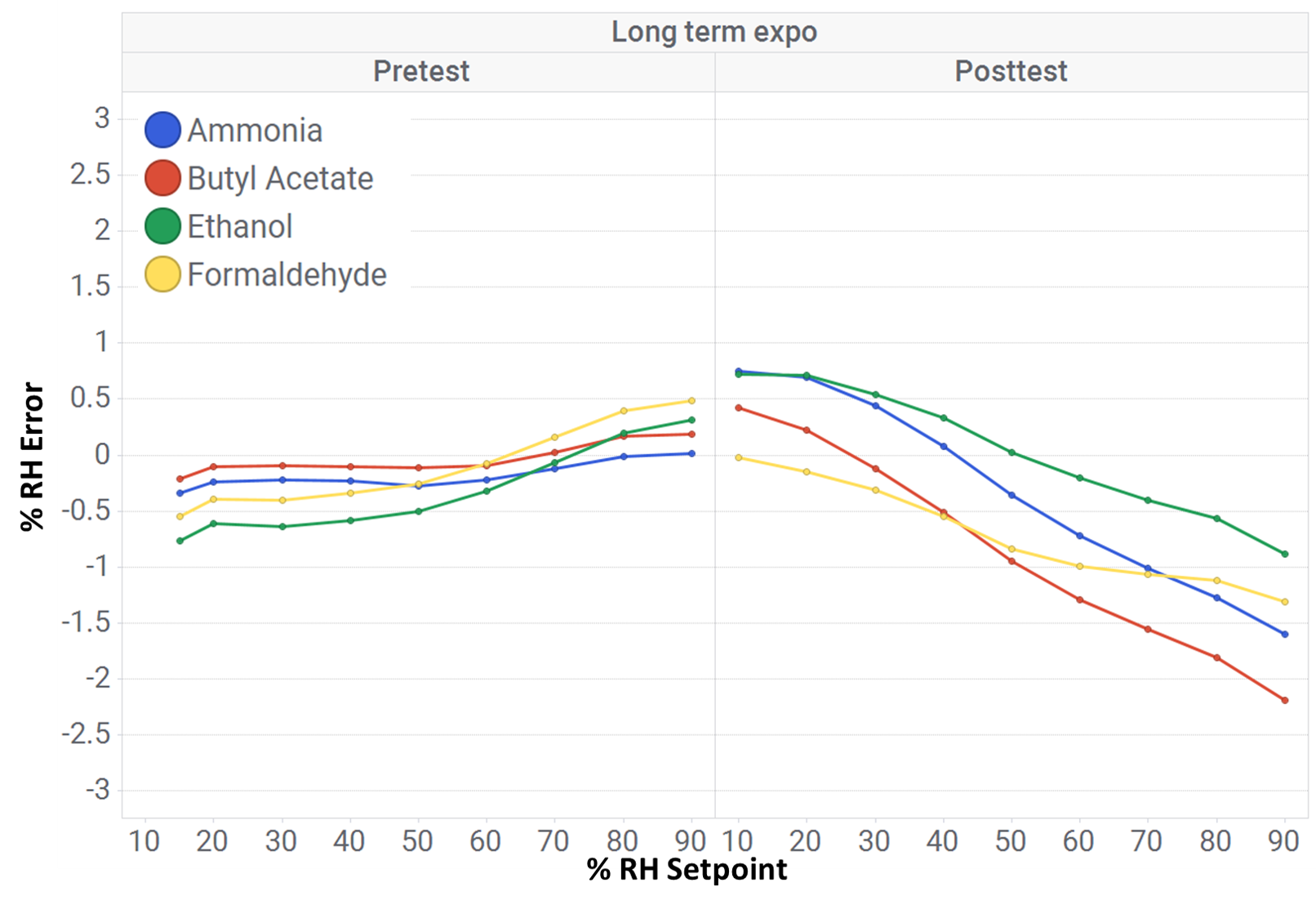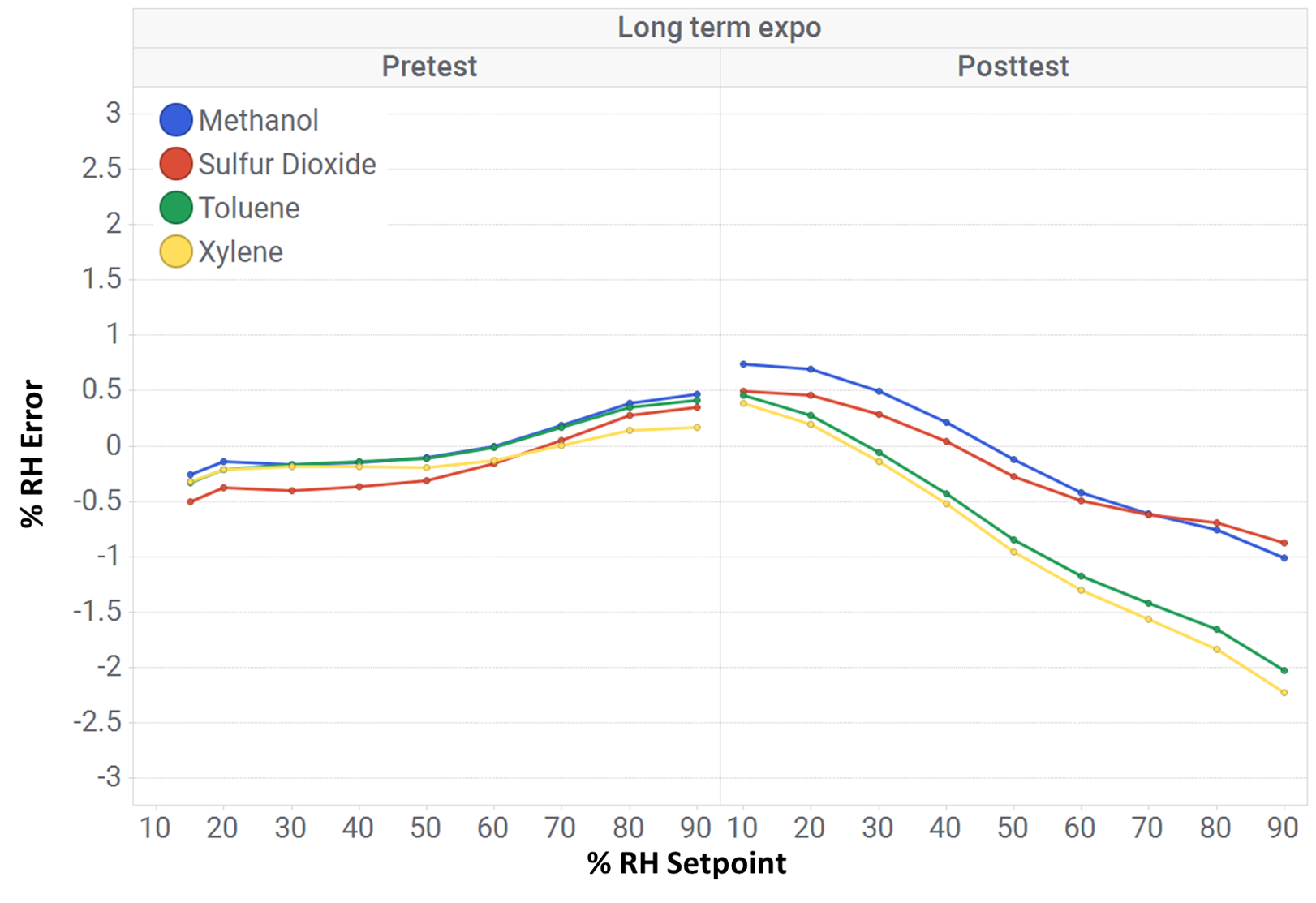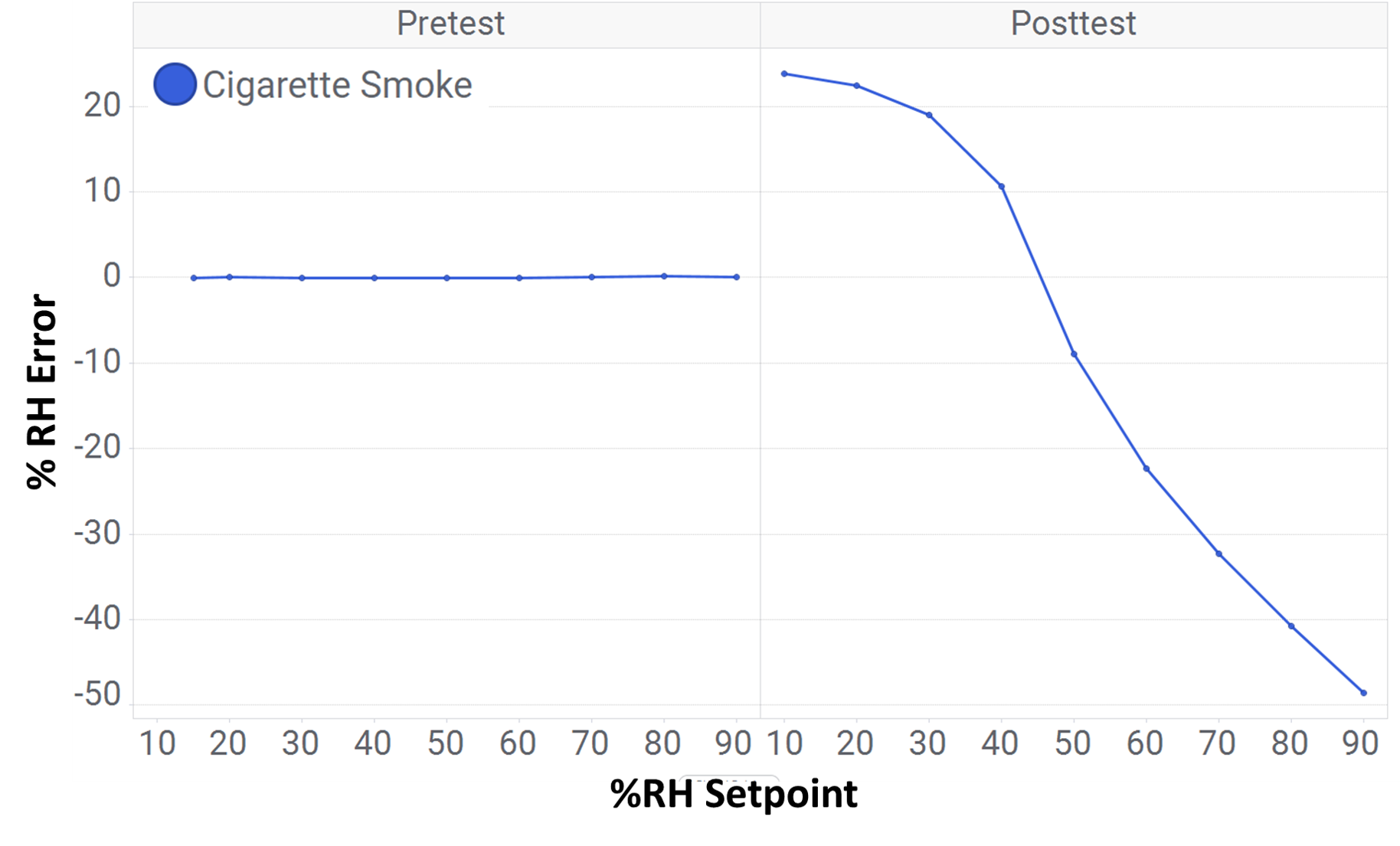SNAU265C june 2021 – july 2023 HDC3020 , HDC3020-Q1 , HDC3021 , HDC3021-Q1 , HDC3022 , HDC3022-Q1
2.2.2 Long-Term Exposure
Four samples per chemical were submitted for a long-term exposure test. These devices were exposed to gaseous forms in a sealed chamber for 21 days. Table 2-2 shows the chemicals in this test.
| CHEMICAL | CONCENTRATION (ppm) | OBSERVABLE DAMAGE |
|---|---|---|
Toluene | 298 – 322 | None |
Xylene | 108 – 131 | None |
Butyl Acetate | 200 – 220 | None |
Formaldehyde | 3 – 5 | None |
Sulfur Dioxide | 5 | None |
Ethanol | 862 – 1003 | None |
Methanol | 195 – 260 | None |
Ammonia | 34 – 35 | None |
Cigarette Smoke | Saturated | Staining and coating |
For the devices exposed to cigarette smoke, smoke from a cigarette was blown into a chamber until it was saturated and the devices were not visible. Half a cigarette was used each time to saturate the chamber and the smoke inside the chamber was refreshed every day.
For the rest of the chemicals, the chemicals were administered using a syringe. The gases were refreshed every seven days by the chemist to ensure the concentration of the gases remained high.
Overall, most of the chemicals had an increased negative gain, but there were no significant offset changes on these parts. Figure 2-3 and Figure 2-4 show the results for these sweeps.
 Figure 2-3 Long-Term Exposure Results.
Figure 2-3 Long-Term Exposure Results.  Figure 2-4 Long-Term Exposure Results.
Figure 2-4 Long-Term Exposure Results. Figure 2-5 shows that exposure to cigarette smoke resulted in a huge negative gain and the RH error of these parts varied from 25% to –50% between 10% to 90% RH setpoints. The boards also had severe discoloration and visible residue on the sensor opening. The sensor was cleaned using air, but the device performance did not recover.
 Figure 2-5 Long-Term Exposure To Cigarettes.
Figure 2-5 Long-Term Exposure To Cigarettes.